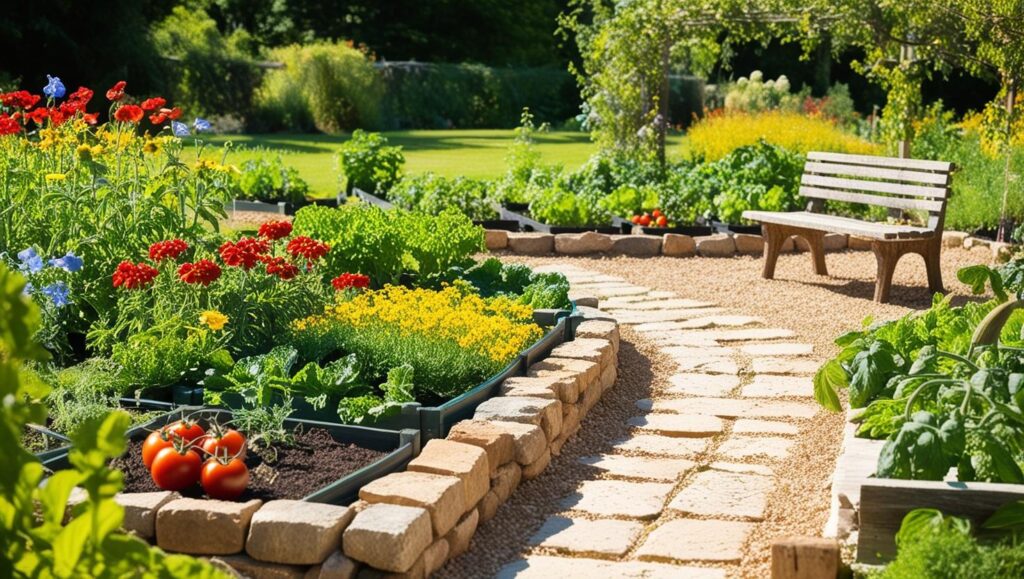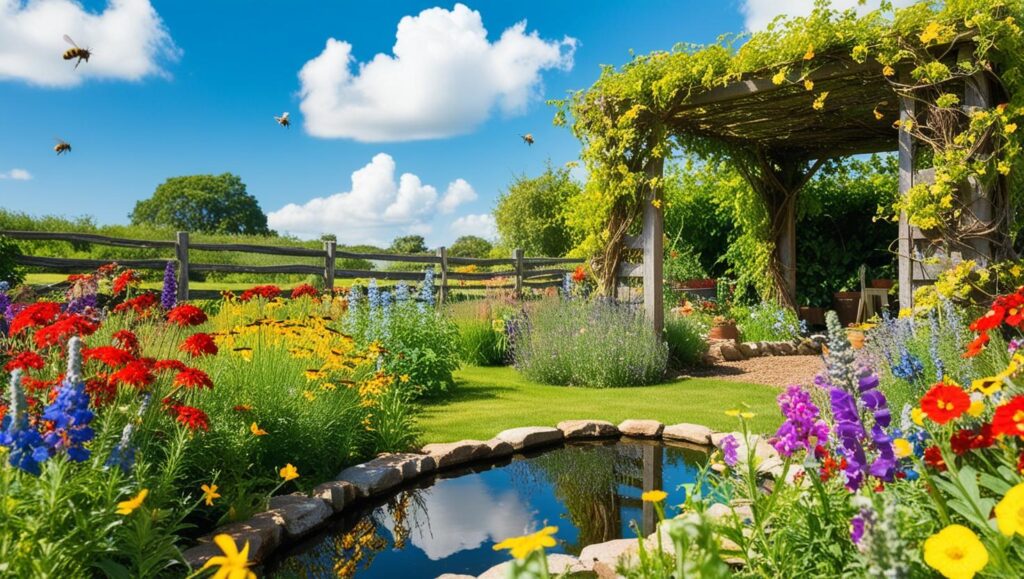Countryside gardens offer a perfect blend of natural beauty and sustainable living. Whether you want to grow organic vegetables, attract pollinators, or simply create a peaceful retreat, designing a countryside garden can be a rewarding experience. With the right planning, eco-friendly practices, and a touch of creativity, you can transform your outdoor space into a thriving, self-sustaining ecosystem.
The Essentials of Countryside Gardens
A well-designed countryside garden balances aesthetics, functionality, and sustainability. Unlike urban gardens, these spaces often have more room for diverse planting and natural landscaping. Key elements to consider include soil quality, water management, and plant selection.
Soil Health and Preparation
Healthy soil is the foundation of any successful garden. In countryside settings, soil conditions vary, so it’s essential to test the pH and nutrient levels before planting. Adding compost and organic matter improves soil fertility and structure, ensuring better plant growth.
Some eco-friendly ways to enrich your soil include:
- Composting: Convert kitchen scraps and garden waste into nutrient-rich compost.
- Mulching: Retain moisture and suppress weeds using natural mulch like straw, wood chips, or leaves.
- Crop Rotation: Prevent soil depletion by alternating plant species each season.

Sustainable Water Management
Water conservation is crucial in countryside gardens, especially in regions prone to drought. Instead of relying solely on municipal water sources, consider these eco-friendly irrigation methods:
- Rainwater Harvesting: Install barrels or underground tanks to collect and store rainwater.
- Drip Irrigation: Deliver water directly to plant roots, reducing waste and evaporation.
- Greywater Systems: Reuse household water from sinks and showers for irrigation (ensure it’s free from harmful chemicals).
Adding a pond or natural water feature can also benefit the ecosystem by attracting wildlife and promoting biodiversity.
Choosing the Right Plants for a Thriving Ecosystem
A countryside garden should be rich in biodiversity, featuring native plants, perennials, and pollinator-friendly flowers. Selecting the right species ensures resilience to local climate conditions and reduces maintenance needs.
Best Plants for a Countryside Garden
- Wildflowers: Lavender, daisies, and cornflowers attract bees and butterflies.
- Edible Plants: Organic vegetables, herbs, and fruit trees provide fresh, homegrown produce.
- Evergreens: Boxwood and holly maintain greenery throughout the year.
- Climbing Vines: Wisteria and honeysuckle add vertical beauty to fences and trellises.
Planting in layers—tall trees, mid-sized shrubs, and ground cover—creates a balanced, natural habitat for birds, insects, and small animals.

Natural Pest Control and Wildlife Attraction
Encouraging beneficial insects and birds can help keep your garden pest-free without using harmful chemicals. Some effective natural pest control methods include:
- Companion Planting: Grow basil near tomatoes to deter pests, or plant marigolds to repel nematodes.
- Attracting Predators: Install birdhouses or plant nectar-rich flowers to bring in ladybugs, birds, and frogs.
- Homemade Sprays: Use solutions of garlic, neem oil, or soap to protect plants from aphids and mites.
Providing shelter, such as log piles and hedgerows, creates habitats for hedgehogs, toads, and other beneficial creatures that contribute to a balanced ecosystem.
Creating a Relaxing Garden Retreat
A countryside garden is not just about plants—it should also be a sanctuary where you can unwind. Incorporate seating areas, pathways, and decorative elements to enhance its charm.
Ideas for a Cozy Outdoor Space
- Rustic Furniture: Wooden benches, hammocks, or a pergola add warmth and character.
- Natural Pathways: Gravel or stone walkways create a seamless connection between garden zones.
- Soft Lighting: Solar-powered lanterns or fairy lights create a magical evening ambiance.
- Seasonal Decorations: Wreaths, clay pots, and handmade signs personalize your space.
Adding a fire pit or an outdoor kitchen can further enhance the experience, making it a perfect spot for family gatherings and relaxation.

Final Thoughts
Countryside gardens are a perfect blend of sustainability and serenity. By focusing on eco-friendly practices, diverse plant life, and thoughtful design, you can create a garden that not only thrives but also supports the local ecosystem. Whether you’re growing organic vegetables, conserving water, or simply enjoying the beauty of nature, a countryside garden offers endless rewards for both you and the environment.
Would you like to incorporate specific themes or elements into your garden design? Let us know in the comments!